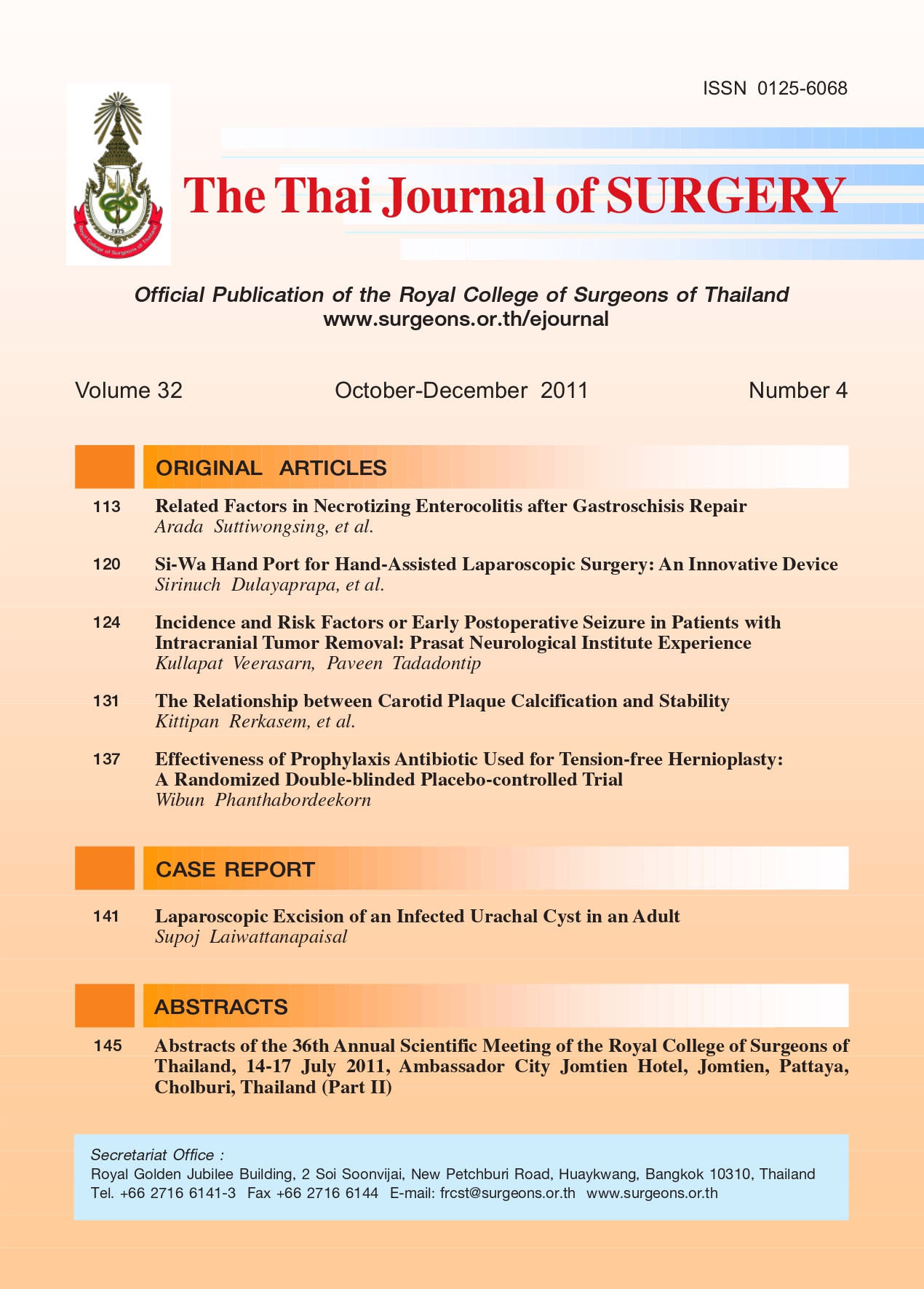Thymoglobuline (ATG-r) Induction in Immunological High Risk Kidney Transplantation
Keywords:
Thymoglobulin, high risk kidney transplantation, CMV infectionAbstract
Objective: To study the efficacy of the thymoglobulin (ATG-r) as an induction therapy for prevention ofrejection in high risk kidney transplantation
Materials and Methods: All high risk kidney transplantation patients during 2008-2010 who received
thymoglobulin (ATG-r) as induction therapy were reviewed. The primary end-points was the incidence of biopsy
proved acute rejection (BPAR) and the secondary end-points were adverse events relating to the use of
thymoglobulin including the infectious morbidity, the graft and patient survival rate .
Results: The rate of acute rejection was 7.3%. The rate of CMV infection was 14.6%. There was one
death (3.7%) due to severe bacterial infection. One-year graft and patient survival rate were 96.3% and 96.3%
respectively.
Conclusion: Thymoglobulin (ATG-r) was an effective induction therapy in high risk kidney transplantation
with the results comparable to the normal risk kidney transplantation. The complication of CMV infection could
be effectively treated by preemptive therapy to prevent CMV disease.
References
non-induction therapy in kidney transplantation : Considering
different PRA levels and different induction therapy.
Transplant Proc 2004;36:874-6.
2. Willoughby LM, Schnitzler MA, Brennan DC, et al. Early
outcomes of thymoglobulin and basiliximab induction
in kidney transplantation: Application of statistical
approaches to reduce bias in observation comparison.
Transplantation 2009;87:1520-9.
3. Brennan DC, Daller JA, Lake KD , et al . Rabbit antithymocyte
globulin versus basiliximab in renal transplantation . N Engl J
Med 2006;355:1967-77.
4. Hardinger KL, Brennan DC, Schnitzler MA, et al . Rabbit
antithymocyte globulin is more beneficial in standard kidney
than in extended donor recipients. Transplantation 2009;
87:1372-6.
5. KDIGO guidelines. Am J Transplant 2009; 9( Supp3 ):S44-58.
6. Strippoli GF, Hodson EM, Jones C, et al . Preemptive treatment
for cytomegalovirus viremia to prevent cytomegalovirus
disease in solid organ transplant recipients. Transplantation
2006;81:139-45.
Downloads
Published
How to Cite
Issue
Section
License
Articles must be contributed solely to The Thai Journal of Surgery and when published become the property of the Royal College of Surgeons of Thailand. The Royal College of Surgeons of Thailand reserves copyright on all published materials and such materials may not be reproduced in any form without the written permission.


